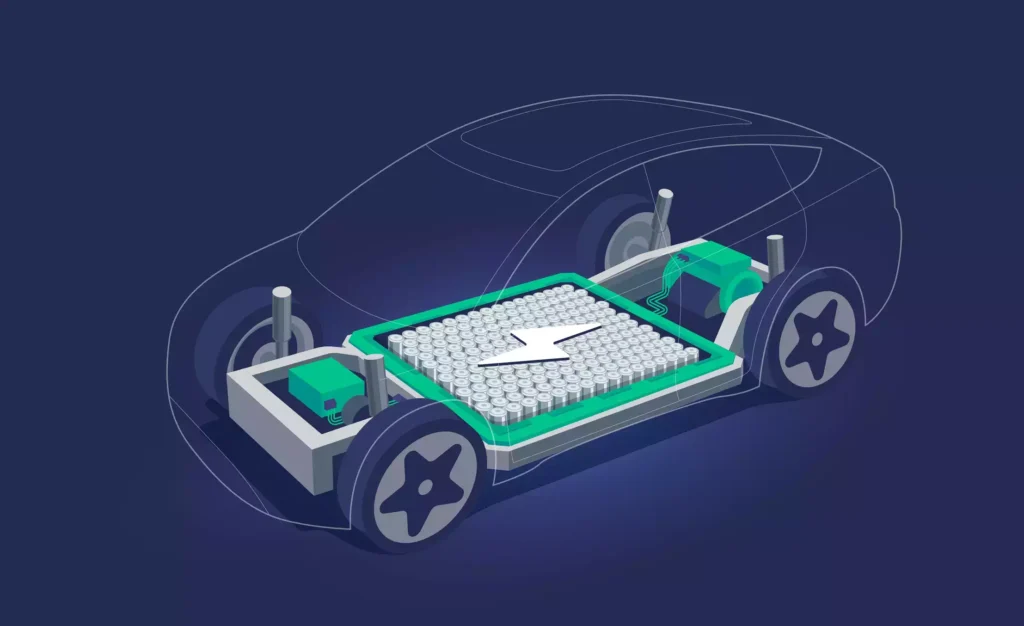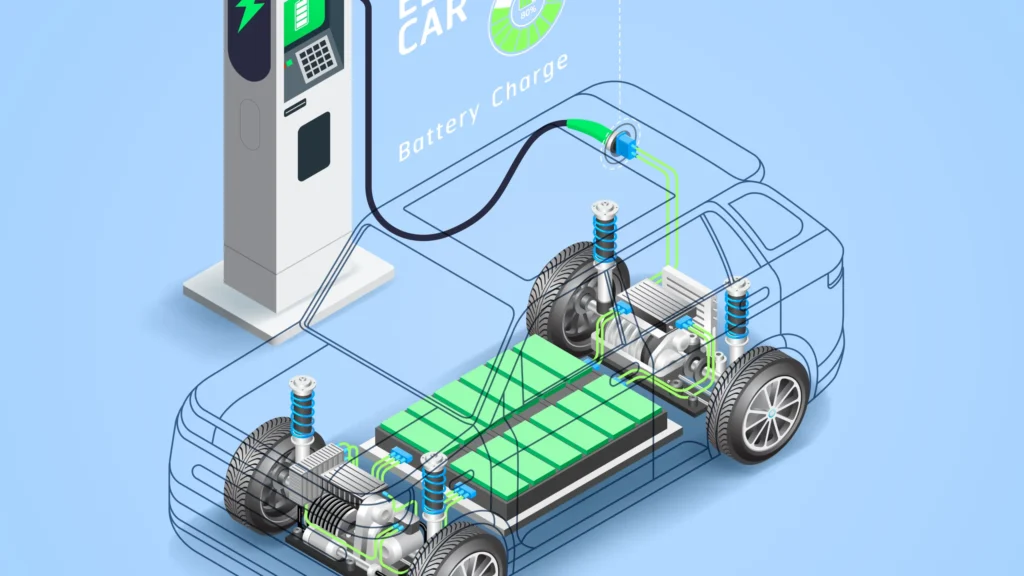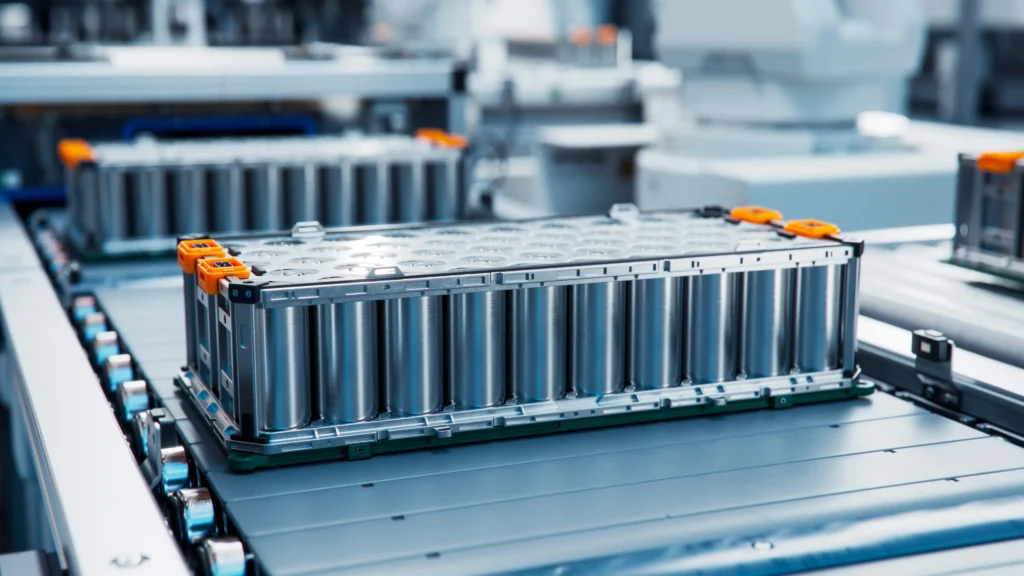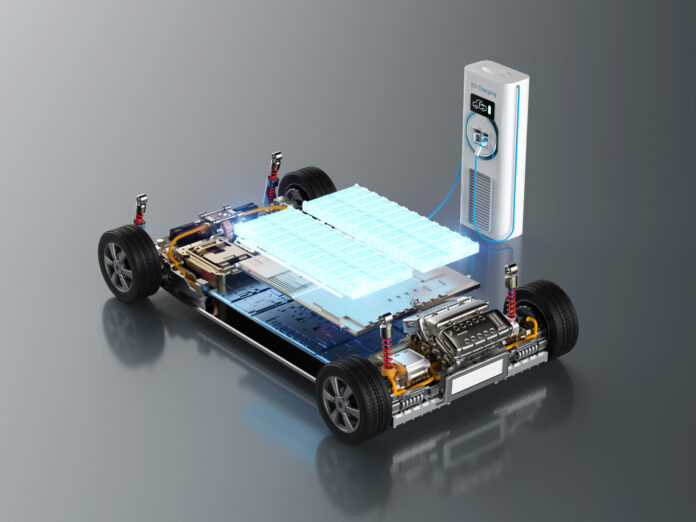Choosing the right battery is crucial for an electric car’s performance, efficiency, and lifespan. Lithium-ion and lead-acid batteries are the two main options, each with its pros and cons. While lithium-ion batteries offer better efficiency and longevity, lead-acid batteries are more affordable. This guide breaks down the differences to help you decide which one suits your EV needs. When comparing Lithium-Ion vs Lead-Acid Battery for your EV, performance, efficiency, and lifespan are key factors to consider.
Key Points
- Which Battery Holds More Energy?
- Which One Is Lighter or Heavier?
- What’s Their Lifespan?
- How Fast Do They Charge?
- Is It Cost-Effective or Pricey?
- Is It Eco-Friendly or Harmful?
- How Do They Perform in Extreme Weather?
- Is It Low Maintenance or High Maintenance?
- Is It Safe or a Fire Risk?
When comparing Lithium-Ion vs Lead-Acid Battery, energy density plays a huge role in determining an EV’s efficiency and range.
Which Battery Holds More Energy?

Lithium-Ion batteries are the rockstars of energy density, cramming an impressive 150-200 Wh/kg into a sleek, compact package. That’s a fancy way of saying they store a lot of juice without taking up much space perfect for electric cars where every mile counts. In real terms, this means an EV with a Lithium-Ion battery can cruise 200-400 miles on a single charge, depending on the model. It’s why you see Tesla’s and Chevy Bolts dominating the highways they’ve got the power to go the distance without needing a pit stop every hour.
Lead-Acid batteries, though, are stuck in the slow lane with a measly 30-50 Wh/kg. They’re bulky and inefficient, so an EV running on Lead-Acid might only manage 50-100 miles before conking out. Back in the day, they powered early EVs like the GM EV1, but today? They’re more suited to low-demand gigs like forklifts or backup power. If range anxiety keeps you up at night, Lithium-Ion’s superior energy density is your ticket to peace of mind.
Which One Is Lighter or Heavier?
Lithium-Ion batteries are like carrying a lightweight gym bag efficient and easy to handle. A typical Li-Ion pack weighs way less than its Lead-Acid rival for the same energy output, often slashing the total battery weight by half. In an electric car, that’s huge less weight means better mileage, snappier acceleration, and less wear on the suspension. It’s no surprise that modern EVs like the Nissan Leaf lean on Lithium-Ion to keep things nimble and fun to drive.
Lead-Acid batteries, on the flip side, are the equivalent of lugging around a sack of bricks. A small pack can tip the scales at 20-30 kg, thanks to those hefty lead plates inside. That extra heft drags down efficiency and makes your EV feel sluggish, especially on hills or long trips. Sure, they’re tough and rugged, but in a world where every pound affects performance, Lead-Acid’s weight is a deal breaker for most electric car owners.
What’s Their Lifespan?
When it comes to staying power, Lithium-Ion batteries are in it for the long haul, lasting 8-15 years or 2,000-3,000 charge cycles. That’s because their chemistry usually lithium cobalt oxide or lithium iron phosphate holds up well against repeated charging. For an EV driver, this means you could rack up hundreds of thousands of miles before even thinking about a replacement. It’s a big reason why Lithium-Ion is the backbone of premium electric cars they’re built to match the lifespan of the vehicle itself.
Lead-Acid batteries, sadly, fade fast, clocking out at 3-5 years or just 200-500 cycles. The culprit? Sulfation a nasty buildup of lead sulfate that gums up the works over time. You’d be lucky to get a few thousand miles out of them in an EV before they start losing steam. For short-term, low-cost projects, they’re fine, but if you’re dreaming of a decade-long love affair with your electric car, Lead-Acid just can’t keep up.
How Fast Do They Charge?

Lithium-Ion batteries are all about speed charging speed, that is. With the right setup, like a DC fast charger, they can hit 80% capacity in 20-30 minutes. That’s a game-changer for road trips or busy days when you need a quick top-up. EVs like the Hyundai Ioniq 6 owe their charge and go reputation to Lithium-Ion’s ability to soak up power fast, keeping you on the move without long pit stops.
Lead-Acid batteries, they’re more like a leisurely Sunday drive, taking 8-12 hours to fully charge. That slow pace comes from their older tech lead plates and sulfuric acid doesn’t play nice with rapid energy transfer. It’s tolerable if you’re charging overnight at home, but for an electric car you rely on daily? Waiting half a day to get back on the road is a buzzkill. Lithium-Ion’s fast-charging edge makes it the clear pick for modern EV life.
A key advantage in the Lithium-Ion vs Lead-Acid Battery debate is charging time, where lithium-ion dominates with its rapid recharge capability.
Is It Cost-Effective or Pricey?
Lead-Acid batteries win the upfront cost battle hands down, priced at ₹4,200 – ₹12,600 per kWh. That’s why they’re a favorite for budget builds or small-scale projects think DIY EVs or off-grid solar setups. If you’re just dipping your toes into electric driving and don’t mind the trade-offs, Lead-Acid’s low entry price can feel like a steal. But here’s the catch: you get what you pay for, and the savings don’t last.
Lithium-Ion batteries hit your wallet harder at ₹12,600 – ₹25,200 per kWh, no doubt about it. Yet, their longevity and efficiency flip the script over time fewer replacements and better range mean lower costs per mile. For an electric car you plan to keep, Lithium-Ion’s higher upfront hit turns into a savvy investment. It’s why manufacturers like Tesla bet big on Li-Ion: the long-term math just makes sense.
Is It Eco-Friendly or Harmful?

Lithium-Ion batteries aren’t saints mining lithium and cobalt has its environmental scars but they’re cleaner than you might think. They use fewer toxic materials than Lead-Acid, and recycling tech is catching up, with companies pulling 90%+ of key elements back into the supply chain. In an EV, their efficiency also cuts down on energy waste, aligning with that eco-friendly vibe electric cars promise. They’re not perfect, but they’re a step toward greener driving.
Lead-Acid batteries lean on lead a heavy metal that’s a nightmare if it escapes into soil or water. Sure, they boast a 99% recycling rate, which is awesome, but mishandling or illegal dumping can still unleash toxins. Plus, their shorter lifespan means more frequent production, adding to their eco footprint. For an electric car aiming to save the planet, Lithium-Ion’s lighter touch gives it the sustainability crown.
How Do They Perform in Extreme Weather?
Lithium-Ion batteries are pretty tough, holding their own from -20°C to 60°C (-4°F to 140°F). Cold snaps can sap 20-30% of their range, and scorching heat might stress them, but advanced EVs have cooling and heating systems to keep things steady. Whether you’re braving a snowy mountain pass or a desert highway, Lithium-Ion adapts well enough to keep your electric car humming along.
Lead-Acid batteries, though, throw a tantrum in extremes. Below freezing, their capacity plummets sometimes by 50% leaving your EV sluggish and short on juice. Above 40°C (104°F), they overheat and degrade faster. Without fancy thermal management (rare in Lead-Acid setups), they’re a gamble in harsh climates. For all-weather reliability in an electric car, Lithium-Ion’s resilience wins out.
Is It Low Maintenance or High Maintenance?

Lithium-Ion batteries are the low-maintenance friends you wish you had plug them in, and they’re good to go. No water to refill, no terminals to scrub, just pure, hassle-free power. In an electric car, this means more time driving and less time tinkering, which is a blessing for anyone who’d rather not pop the hood every month. It’s a big reason Li-Ion dominates the EV market: simplicity rules.
Lead-Acid batteries demand TLC. You’ve got to top off distilled water, clean corrosion off terminals, and watch for leaks skip these, and they’ll die early. It’s like owning a vintage car that needs constant love to stay alive. For a golf cart, that’s doable, but in an electric car you rely on daily? That upkeep gets old fast. Lithium-Ion’s “set it and forget it” vibe is a lifesaver.
Is It Safe or a Fire Risk?
Lithium-Ion batteries carry a small but real fire risk overheating or damage can spark a blaze, as seen in rare EV incidents. But don’t panic: modern electric cars pack battery management systems (BMS) with cooling tech to keep things chill. Think of it like a built-in fire fighter risks are tamed, and for everyday driving, Lithium-Ion’s safety record is solid enough to trust.
Lead-Acid batteries play it safer, with no fire hazard to speak of. They can leak acid or vent hydrogen gas if overcharged, which isn’t fun, but it’s less dramatic than a Li-Ion flare-up. Still, their stability comes at a cost lower performance and efficiency. For an electric car, where Lithium-Ion’s risks are offset by cutting-edge safeguards, it’s the smarter, safer bet in the long run.
Conclusion
When choosing between lithium-ion and lead-acid batteries for your EV, consider performance, cost, and longevity. Lithium-ion batteries offer better efficiency, faster charging, and a longer lifespan, making them the preferred choice for most modern EVs. Lead-acid batteries, though cheaper, fall short in durability and energy density. If long-term savings and reliability matter, lithium-ion is the clear winner. Ultimately, in the Lithium-Ion vs Lead-Acid Battery debate, lithium-ion proves to be the better long-term choice for EV owners. For more insights into battery performance and efficiency, visit Battery University.








